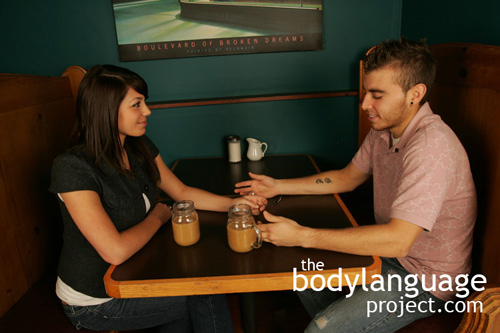The research shows us that a significant amount of information is inhibited from reaching the brain when our bodies show closed body language. In one such study, two groups of students attended the same lecture. One group was instructed to hold their arms and legs crossed throughout, while the other received no such instructions. The group instructed to hold closed body language was found to have retained forty percent less information than the group that held open body language. The lecturer was also rated far more critically. Therefore, when presenting to someone with their arms crossed it is vitally important to use tactics that help them open up and drop negative cues. Not only will the retention of your message increase significantly, but so too will the probability that any agreement will take place.
It’s nearly impossible to formulate agreements with others who have their arms crossed or a myriad of other closed body postures. By simply opening your objective, they will be more receptive to your thoughts and ideas. This is why is it important, as closed body language arises, to immediately re-calibrate your tactics. If your target’s legs cross, have them stand up and move to the same side of the table to get a closer look at the material, or have them reach forward for something, forcing them to take a ready position with their bodies leaning toward you. If their arms are crossed, have them jot down notes on a piece of paper which you can express as being important for later, or have them examine a document which you can hand to them. You will want to carefully monitor their post position to see if after the item is discarded they return to their original closed body position. If they are adamant in keeping closed, they probably aren’t receiving the message to your favour.
Other ways to open people include handing them a cup of coffee, or glass of water, show them photographs of family or pets, handing them model cars or any other office artifact you might have noticed them examining with some interest. Handing them any object forces them to uncross their arms to reach for it thereby opening them. The object used isn’t vitally important, it just needs to be interesting enough to motivate them to reach for it. By doing a bit of research beforehand, you can probably find a mutual interest that can be exploited during the pitch to build rapport. This will prove especially useful if the meeting takes a turn for the worst. Being creative to re-open the conversation is an important tactic for everyone in business.

